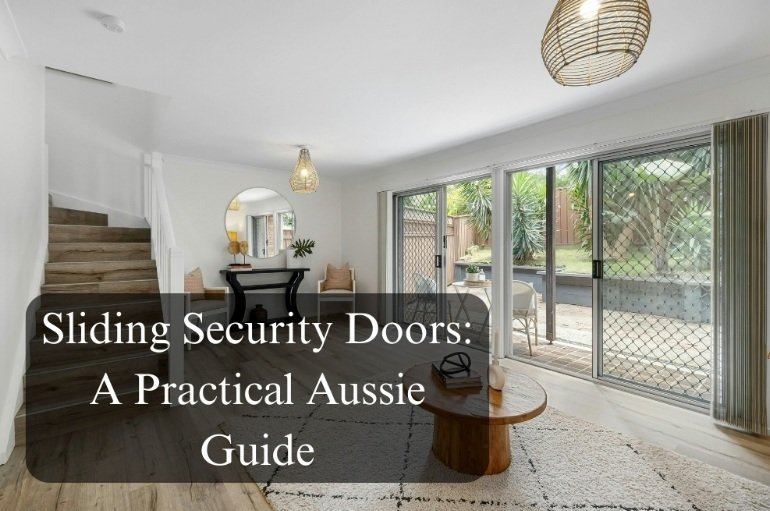
Moving into a new place—or finally tackling that long-overdue upgrade—usually starts with paint charts and furniture, not door hardware. Fair enough. But if your home opens to a deck, courtyard, or balcony, the sliding aperture is both a gateway and a weak point. Warm evenings call for airflow; pests and opportunists shouldn’t come with it. The trick is getting practical security without turning your living area into a bunker. Start with how you actually use the opening: do you leave it ajar at night, are kids darting in and out, is the track exposed to weather? Think about sightlines, breezes, pets, and the spots where grit accumulates after a windy day. A little planning here saves frustration later—quiet rollers, decent mesh, and a lock that’s easy to use, the sort of balanced setup you get from sliding mesh doors when they’re measured and fitted properly.
You want fresh air and daylight without compromising safety. Sliding systems can deliver both when the details are right.
For homes that rely on a large opening for breeze and access, security and convenience need to live together. That balance is the goal: make the opening feel natural to use while quietly adding a layer of protection.
A quick measure-and-hope approach is how you end up with rattles and sticky tracks. Give yourself half an hour to assess the opening and your routine.
In one rental I looked after, the sliding panel squealed like a shopping trolley. The track had a divot where sand had settled. A quick vacuum, track-cap, and proper roller adjustment got it gliding, and the lock finally lined up. It wasn’t glamour—just doing the basics well. Keep notes and a few photos; they make quotes more accurate and maintenance easier later.
Good hardware is undermined by poor fit. A tidy install feels effortless because nothing binds and every part has room to move.
When you’re weighing standards and day-to-day use, it helps to frame choices with clear guidance about home security door safety. The aim isn’t to overbuild; it’s to cover the risks that actually apply to your home and routine.
Materials aren’t just about looks; they set the tone for maintenance and feel. Decide what you value most—long-term durability, easy cleaning, coastal resistance—and choose from there.
I judge hardware by sound: a soft “thunk” when the latch engages and a quiet roll across the track are signs of a setup that should age gracefully. If you have a breezy aspect, a closer or auxiliary latch can keep the panel from creeping in the wind.
Security choices land better when they sit inside a bigger plan for settling in. Early organising saves rework and helps the home feel finished faster.
If you’re mapping the bigger picture—utilities, locks, early chores—folding the sliding opening into that plan is simple. It pairs neatly with broader move-in checklists about setting up your new home, where small security decisions sit alongside layout and lighting choices.
A security door should feel invisible most days—that’s the compliment. A few light habits keep it that way.
Two quick stories. First, a balcony door that “mysteriously” opened itself on gusty nights—the fix was an auxiliary latch that held the panel against creep. Second, a coastal install that felt sticky every summer—turns out the track caught airborne salt; a rinse and silicone-free dry lube solved it.
A sliding security door earns its keep when it’s forgettable: it glides, latches with a calm click, and lets air move through the house without inviting trouble. Start with your opening—track, reveals, how the family moves—and choose mesh, frame, and locks that fit that reality. Measure honestly, install square, and keep the track clean; those three habits outlast most clever add-ons. Tie the door into the way you set up a new home: clear pathways, sensible lighting, and locks that feel intuitive. Do that, and the door becomes what it should be—quiet confidence at the boundary, and a room that breathes the way you want it to.
Eliminate Stressful Showings and Get Immediate Cash from Your Westwego House
December 4, 2025The Top 5 Dishwasher Faults Perth Technicians See Every Week
November 26, 20255 Reasons Perth Builders Recommend Ziptrak for Alfresco Designs
November 26, 2025How to Build a Designer Bathroom on a Warehouse Budget
November 26, 2025NexdiLTD.com Review: Learning to Trade with Nexdi’s Educational Resources
November 19, 2025